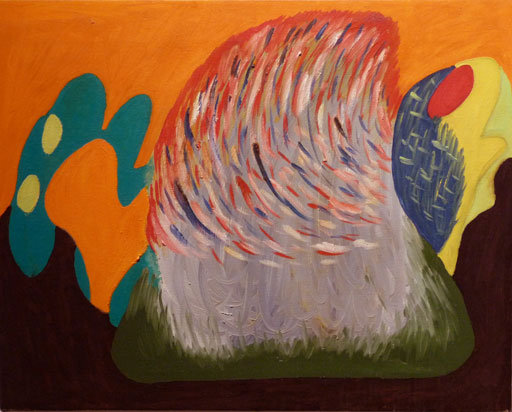Richard Gorycki
dal 21/1/2009 al 6/2/2009
Segnalato da
21/1/2009
Richard Gorycki
M.Y. Art Prospects, New York
Paraphernalia and Other Treasures. The paintings and drawings in this exhibition roughly cover the span of time from 1985-1995. Gorycki's wide range of interests as a youth, such as economics, Sanskrit and Vedic philosophy, and European art (which he studied in Madrid), all hover in the background of his unique introverted vision.

Organized by Jeffrey Haddow
In 1979, when he was 33 years old, Richard Gorycki suffered a nervous breakdown and was diagnosed with schizophrenia. In the early 1980s, he began taking art therapy classes at Gowanda Psychiatric Center in western New York. The paintings and drawings in this exhibition roughly cover the span of time from 1985-1995. Although naiveté is a word often used to describe outsider artists, Gorycki's wide range of interests as a youth, such as economics, Sanskrit and Vedic philosophy, and European art (which he studied in Madrid), all hover in the background of his unique introverted vision.
The idea of this exhibition began several years ago when the artist's childhood friend and playwright, Jeffrey Haddow, received dozens of color photographs documenting artwork Gorycki created in his art therapy course. Some of the works--depicting imaginary buildings and landscapes, as well as abstract geometric shapes—were drawn on paper with colored pencil. Others were watercolors, and some were painted in oil on canvas. The striking nature of the images led Mr. Haddow to investigate their artistic value. He says, “I knew there was something called outsider art, and I thought it might be possible to find a market for Gorycki’s work.” His idea of helping Mr. Gorycki progressed another step last year when he discussed the idea with several dealers at the annual Outsider Art Fair in New York. He ultimately decided to organize an exhibition to draw attention and hopefully garner positive feedback from as many people as possible, including experts on outsider art.
Richard Gorycki was born in Jamaica, New York in 1946. He studied at Georgetown University, graduating in 1969 with a degree in economics, and immediately upon leaving school faced the draft. At his pre-induction physical, he was found to have hypertension and given a medical deferment. Throughout the 1970s, he worked at various jobs while pursuing studies in Eastern religions and philosophies. In 1979, he suffered a breakdown and was diagnosed with schizophrenia. After being discharged from a psychiatric center in 1980, Mr. Gorycki studied land surveying at Alfred State College. Although he took a job in this field shortly after completing his studies, he was unable to continue and voluntarily committed himself to Gowanda Psychiatric Center. It was while in residence at Gowanda that he began drawing in art therapy classes. He used mainly colored pens and some pastels on paper, but also explored oil on canvas. Although he found creating art to be beneficial, he gave it up in 1995, mainly because, as he says, “there was no payoff.” In an autobiographical sketch, he writes: “While I have not painted for over a decade now, I feel I could go back to it on short order. But only if there were a payoff. If I could earn money from my artwork, I would do it. Otherwise I have no interest. So I guess I am not an artist at heart, someone who would create regardless of a payoff or not.” Mr. Gorycki currently lives on a small disability pension in Alfred, New York.
Opening Reception January 22, 6-8PM
M.Y. Art Prospects
547 West 27th Street - New York
Free admission



